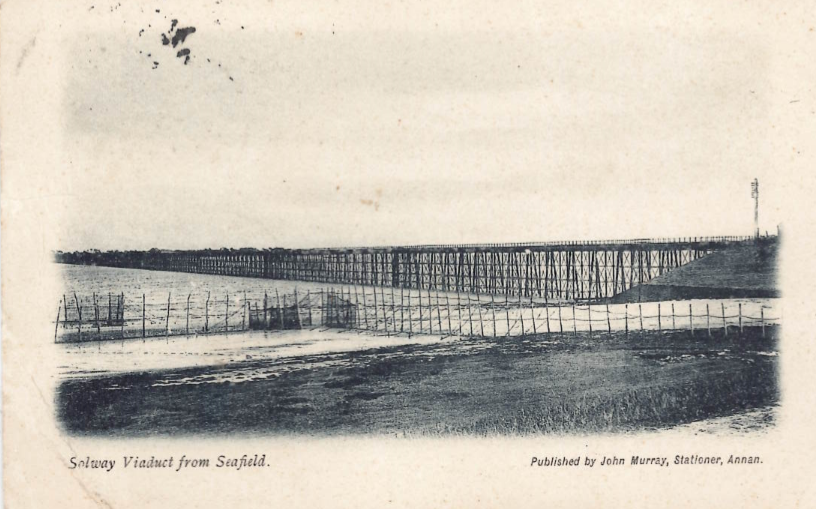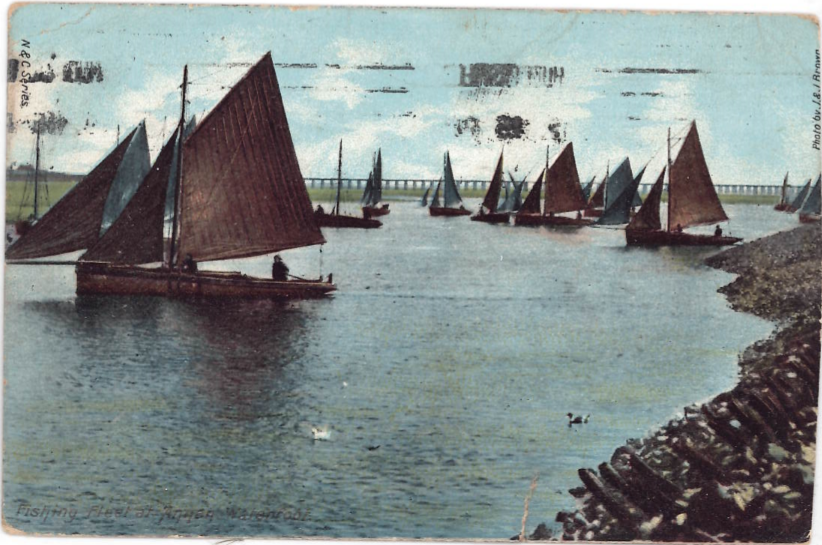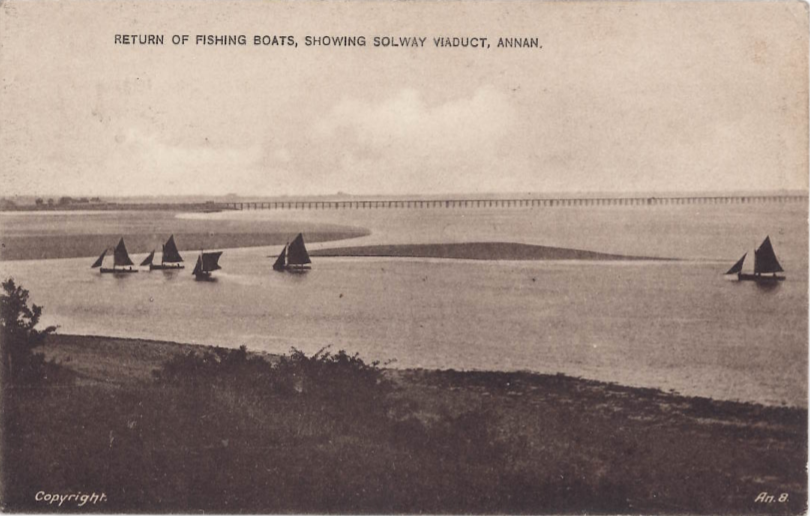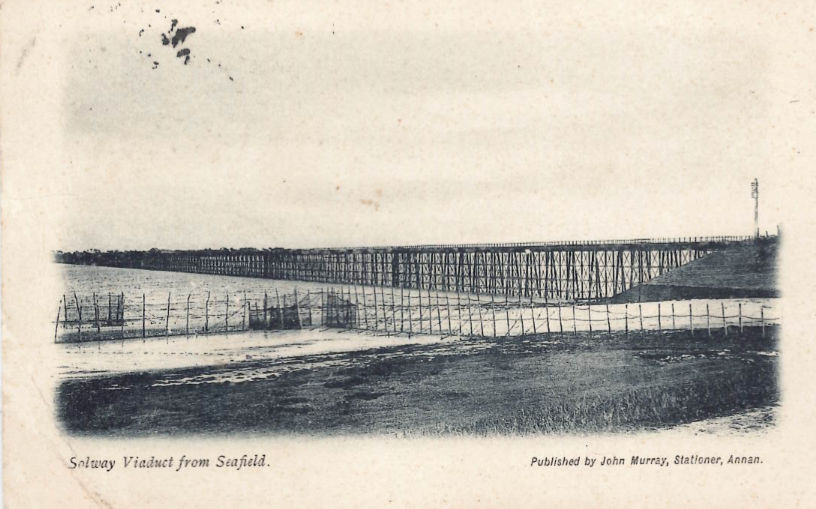
Some old postcards in the Museums store inspired us to research the Solway Viaduct in more detail. The bridge and its railway line used to connect England and Scotland, it was also used in WW1 to supply HM Factory Gretna and its former site is located about 6 miles from The Devils Porridge Museum.
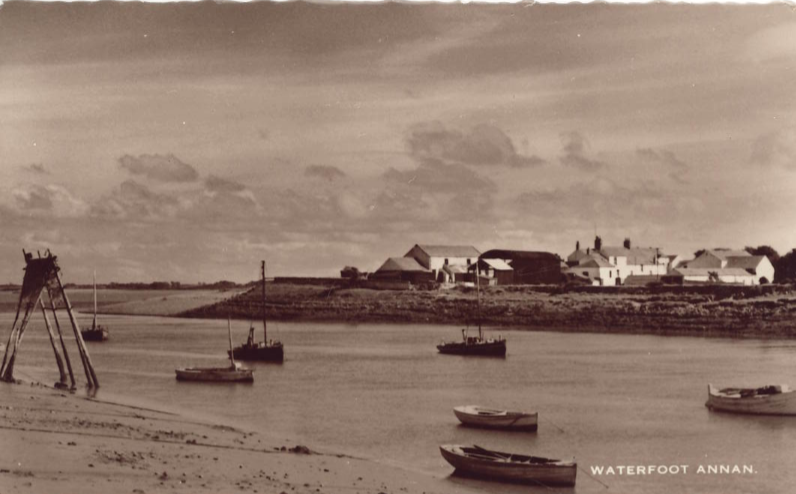
The Solway Junction Railway was built by an independent railway company to shorten the route from ironstone mines in Cumberland to ironworks in Lanarkshire and Ayrshire. It opened in 1869, and it involved a viaduct 1 mile 8 chains (1.8 km) long crossing the Solway Firth, as well as approach lines connecting existing railways on both sides.
Reconstruction of the viaduct began in the summer of 1882: in the rebuilt viaduct, the three inner columns in each pier were still cast-iron, but the two outer ‘rakers’ were each a single wrought-iron tube filled with concrete and provided with timber ice fenders.
In 1914 an assessment of the maintenance needs of the viaduct was carried out. The long metal structure exposed to a marine atmosphere had deteriorated and £15,500 would need to be expended in maintenance work. The work was suspended on the outbreak of World War I, which saw increased use of the viaduct for iron-ore and pig-iron traffic from West Cumbria to Scotland. It was announced that stations south of the viaduct were to be closed from 1 February 1917 but this decision was promptly rescinded. The creation of a large munition works at Eastriggs, to the east of Annan, gave the line additional traffic; including (in May 1917) the Royal Train, carrying King George and Queen Mary on a four-day tour of that and other munitions factories.
